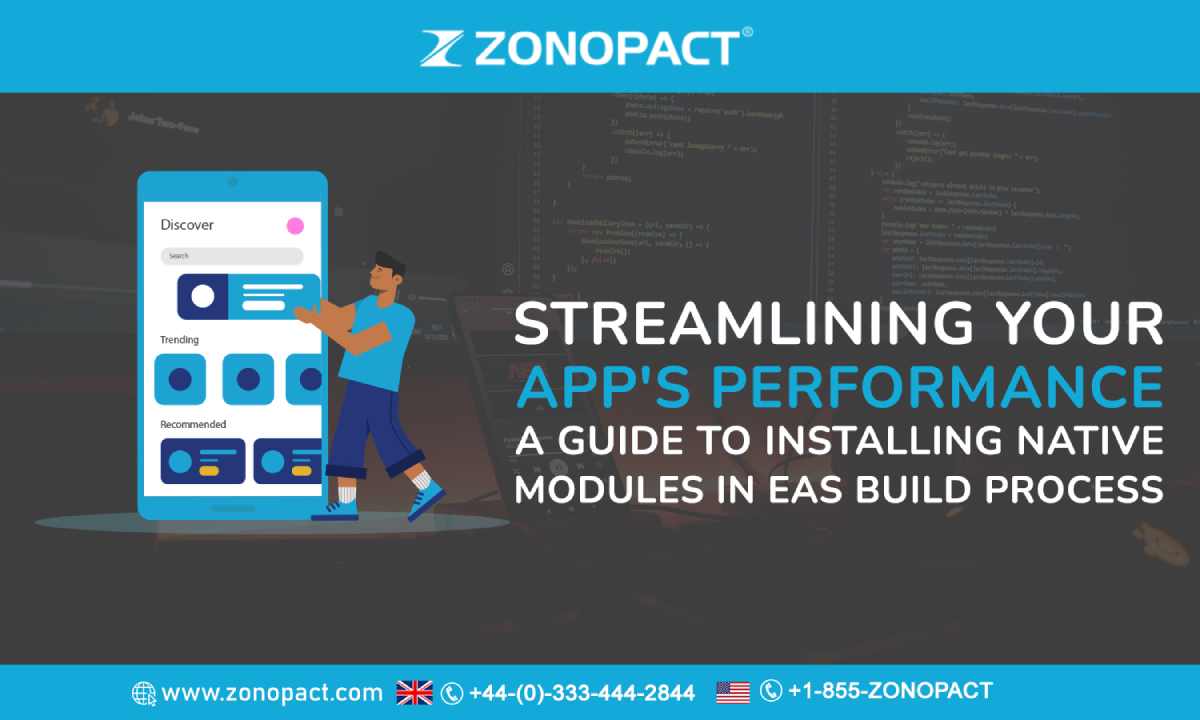
Mobile app development has come a long way, and the need for efficient and fast-performing applications is on the rise. A well-optimised app can make a world of difference to the user experience, and one of the best ways to achieve this is by using native modules in the EAS build process. Native modules can help to reduce the size of your app, optimise functionality, and improve the speed of your app. However, many developers find the process of installing native modules to be daunting and complicated.
In this guide, we will explore how you can streamline your app’s performance by installing native modules in the EAS build process. We will explain the benefits of using native modules, guide you through the installation process, and offer best practices for ensuring your app runs smoothly. Whether you are new to mobile app development or a seasoned developer, this guide will provide you with valuable insights and practical tips for optimising your app’s performance.
Advantages of Native Modules
Native modules provide several advantages that can help optimise the performance of your app. First, they can help to reduce the overall size of your app by allowing you to remove unnecessary code. This can significantly improve the download speed and storage space requirements of your app, making it more attractive to users. Additionally, native modules can help to optimise the performance of your app by allowing you to use platform-specific features and functionality. For example, if you are developing an app for iOS, you can use native modules to access iOS-specific features such as the camera, accelerometer, and GPS. Similarly, if you are developing an app for Android, you can use native modules to access Android-specific features such as the text-to-speech engine, NFC, and Google Maps. By using native modules, you can provide a better user experience and improve the overall performance of your app.Understanding EAS Build Process
Before you can install native modules, it is essential to understand the EAS build process. EAS (Expo Application Services) is a cloud-based build service that allows you to build, test and deploy your app. EAS provides a seamless and efficient way to build your app, and it supports various features such as incremental builds, caching, and automatic signing. To use EAS, you will need to install the Expo CLI and create an Expo account. Once you have done this, you can use the eas-cli to build and deploy your app. The EAS build process consists of several stages, including dependency installation, bundling, and code signing. Native modules can be included in the EAS build process by using the Expo SDK. The Expo SDK provides a set of native modules that can be added to your app to enhance its functionality. These modules are developed and maintained by the Expo team and are designed to work seamlessly with Expo-managed workflow.Installing Native Modules in EAS Build
Installing native modules in the EAS build process is a simple and straightforward process. The first step is to identify the native module you want to use and add it to your project’s dependencies. You can do this using the npm or yarn command-line tool. Once the module is added to your project, you will need to link it to your app using the react-native link command. The linking process will create a bridge between your app and the native module, allowing you to access its functionality. Once the module is linked, you can import it into your app and start using it. It is essential to ensure that the native module you are using is compatible with your app’s platform and version. Some modules may require additional configuration or setup, so it is essential to read the documentation carefully.Preparing your App for Native Modules
Before installing native modules in your app, it is essential to prepare your app for the changes. Native modules can introduce new dependencies and require additional configuration, so it is crucial to ensure that your app is ready to handle these changes. The first step is to update your app’s dependencies and ensure that all packages are up to date. You can do this using the npm or yarn command-line tool. Once your dependencies are up to date, you can add the native module to your project’s dependencies and link it to your app. It is also essential to test your app thoroughly after installing native modules. Native modules can introduce new bugs and compatibility issues, so it is crucial to test your app thoroughly before deploying it to production.Best Practices for Native Module Installation
When installing native modules in your app, it is essential to follow best practices to ensure that your app runs smoothly. Here are some best practices to follow:- Read the documentation carefully before installing a native module.
- Test the module thoroughly before deploying it to production.
- Keep your dependencies up to date to avoid compatibility issues.
- Use the Expo SDK to ensure that the native module is compatible with Expo-managed workflow.
- Use a version control system such as Git to manage your app’s codebase.
Common Issues and Troubleshooting
Despite your best efforts, you may encounter issues when installing native modules in your app. Here are some common issues and how to troubleshoot them:- Module not found: This error occurs when the module is not properly linked to your app. To fix this, run the react-native link command again.
- Incompatible module version: This error occurs when the module is not compatible with your app’s platform or version. Ensure that the module is compatible before installing it.
- Build error: This error occurs when the build process fails. Check the error message for more information and try again.